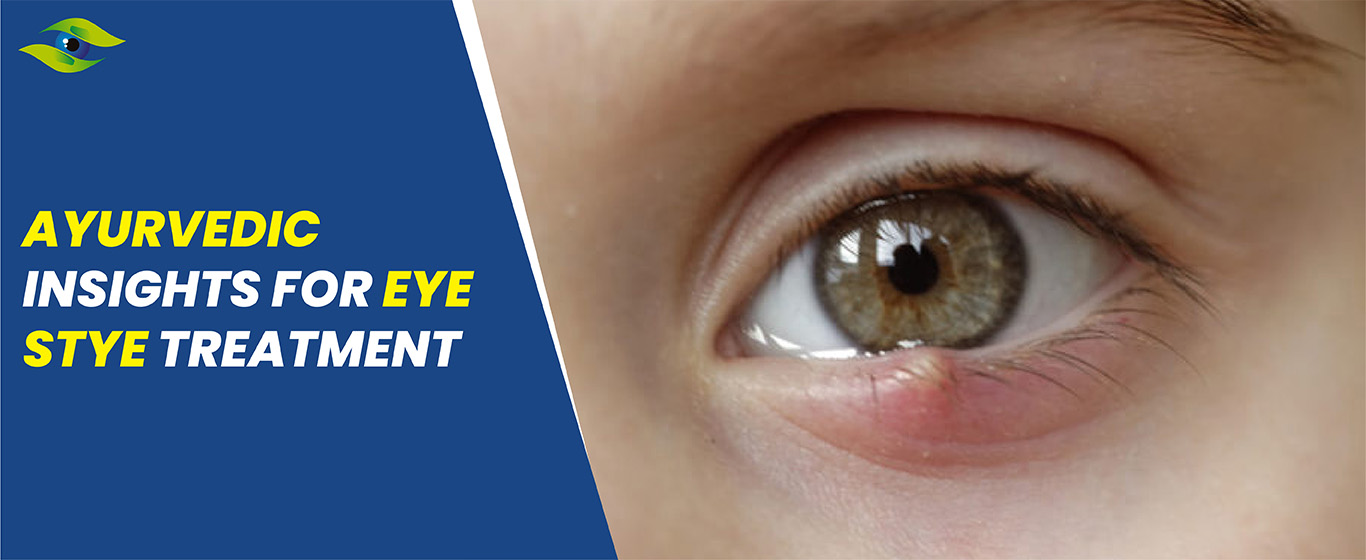
Have you ever noticed a small bump or redness along the edge of your eyelid? This may be a stye, or external hordeolum, a common condition that can cause discomfort and pain. With proper care, however, styes can be effectively managed.To understand eye stye treatment first we should know what exactly eye stye is and its type. In this blog, we’ll explore styes in detail—what they are, how to treat them, and when to seek medical help.
Understanding Stye Eye Disease & Its Type :
A stye is a small, red, painful bump that appears along the edge of your eyelid. It occurs when a gland at the eye lid’s margin becomes blocked and infected, often by the bacteria Staphylococcus aureus. Styes can appear on either the upper or lower eyelid, resulting in discomfort, tenderness, and swelling.
There are two primary types of eye styes:
External Stye: This type appears on the outer edge of the eyelid, usually at the base of an eyelash. It resembles a small pimple and is the most common type.Gland of Zeis secretes an oily substance to lubricate our eyelashes. Gland of Moll is a sweat gland. Now, if infection occurs in the glands of Zeis or Moll. It is called an external stye.
Internal Stye: This forms inside the eyelid, typically within an oil gland. Internal styes tend to be more painful than external ones and may take longer to heal.
Symptoms of an Eye Stye
Eye styes are generally easy to identify due to their unique look and symptoms. Common signs include:
- A red, swollen bump on the eyelid
- Tenderness or discomfort in the affected area
- Sensitivity to light
- Excessive tearing or watering of the eye
- A gritty sensation when blinking
While, meibomian gland prevents the evaporation of our eye’s tear film. Now, sometimes in the above glands, dead skin cells and bacteria get trapped leading to an infection, thus giving rise to a stye.
However, if the infection occurs in the meibomian gland. It is called an internal stye. Also, as an internal stye presses against our eye. It proves to be more painful than an external stye
Why do we get eye bags ?
It is a sign indicating that we need to take a long holiday. One of the main reasons for eye bags is aging. As we age, various changes take place in our body. I get more attractive with age. Now listen. Our skin contains collagen and elastin. They keep our skin firm and elastic. In addition, we have fat tissue surrounding our eyes for cushioning.
Due to aging, our skin produces less collagen and elastin, causing it to become loose. Also, the muscles and ligaments that hold the fat tissue in place begin to get loose, and the fat starts dropping down. This loose skin and fat make the area around our eyes appear swollen, giving us eye bags. Besides this, heredity, salt intake, smoking, etc.
Difference Between Eye Bags and Eye Styes
People often confuse eye bags with an eye stye because both conditions involve swelling or puffiness around the eyes, but they differ significantly in cause and symptoms. Here’s why the confusion happens:
- Swelling: Both eye bags and styes cause noticeable swelling around the eyes, leading people to assume they are the same issue.
- Location: Eye bags appear under the eyes, while styes form on or near the eyelid. The proximity makes it easy to mistake one for the other.
- Common Misunderstanding: Many people aren’t familiar with the medical difference between cosmetic puffiness (eye bags) and infection-related swelling (stye), so they may misidentify the condition.
- Discomfort: Although styes are usually painful, eye bags are not. The presence of puffiness can sometimes lead people to assume there’s an underlying infection when it’s actually due to other factors like aging or fatigue.
Ayurvedic treatment for Styes
Stye eye disease treatment and that too Ayurvedic treatment for styes advises that if symptoms of stye do not improve within a week, you should see a doctor. As per Ayurveda, a stye is the faulty formation of Rakta Dhatu and is named Anjananamika.
Stye is characterized by the Pitta dosha, which also results in the aggravation of other doshas. An internal stye is also corresponded with Utsangini and Kumbhika.With ayurvedic treatment, you can aim to cleanse and nourish the dhatus involved in the functioning of the eyes. It also focuses on strengthening the immune system for better and permanent recovery, using therapies, concoctions, and procedures.
Panchakarma therapies like Nasya, Netra Vasti, Shirodhara and Shiro Abhyanga can also be used to treat the underlying cause of stye. With this Panchakarma treatment, you can help the patient release his stress from the body so that your immune system stays healthy and can heal most illnesses on its own.
At Dr Basu Eye Care Centre, we have designed entirely safe procedures for our patients, using only authentic and herbal concoctions. We continuously strive to meet these high standards in pursuing your health goals. We are committed to providing top-notch eye care and understand the discomfort that styes can bring, and we’re here to support you through every step of treatment.
You Can Also Read For More Posts
What does 6/9 & 6/12 vision means and how to cure It
Understanding Eye Infections in Babies: Symptoms and Care
To Know More, Talk to our Consultant. Dial +91-8235808080
